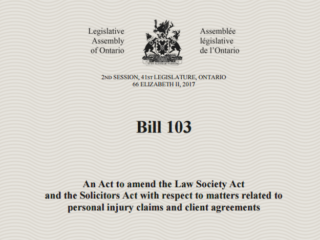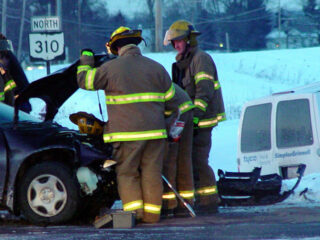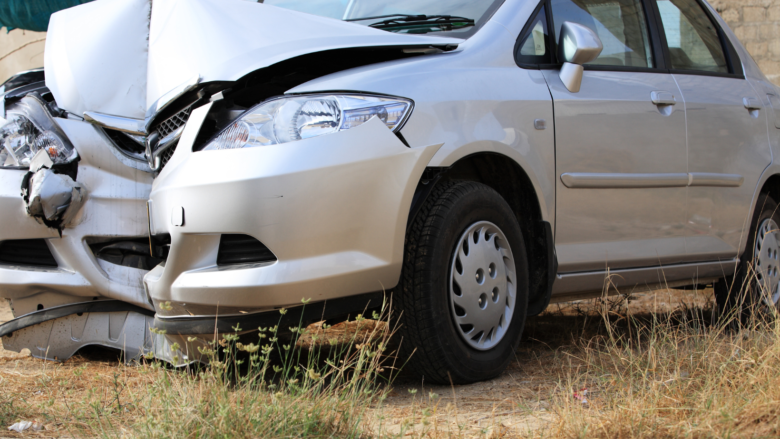This Licence Appeal Tribunal (LAT) decision confirms that minors are entitled to claim non-earner benefits under the Statutory Accident Benefits Schedule – Effective September 1, 2010 (“SABS”), and that payment of the benefit will be deferred until they reach the age of 18.
The applicant in this case, DC, was involved in a motor vehicle collision on September 20, 2019. DC was 12 years old at the time. As a result of the collision, DC suffered a traumatic brain injury resulting in catastrophic impairment. The dispute before the LAT was whether the respondent, TD Insurance Meloche Monnex, was required to pay DC a non-earner benefit. At the time of the LAT hearing, DC was 15 years old.
Adjudicator, Deborah Neilson, clarifies the proper interpretation of s.12 of the SABS, and provides a helpful decision for minors, who may be suffering a complete inability to carry on a normal life, and are therefore eligible to receive non-earner benefits.
Anonymizing the Order
As an ancillary issue at the outset of the decision, Adjudicator Neilson exercised her discretion to restrict the public’s access to the adjudicative record and anonymize the decision.
The LAT’s authority for doing so is found in s. 2(2) of the LAT Adjudicative Records Act and Rule 13.1 of the Licence Appeal LAT, Animal Care Review Board, and Fire Safety Commission Common Rules of Practice and Procedure, Version I (October 2, 2017).
Adjudicator Neilson explained that public access to LAT proceedings is protected by s. 2(b) of the Charter of Rights and Freedoms, therefore the LAT will only exceptionally restrict public access to the identity of parties by anonymizing a decision. In doing so, the LAT must be satisfied that the interest in safeguarding personal privacy in a particular case outweighs the public interest in including that information in the publicly accessible decision.
Concerns were noted for DC’s inherent vulnerability as a minor; his particular deficits leaving him vulnerable to being taken advantage of; and the risk of psychological harm to him because of the stigma associated with his injuries. The risk of harm to DC was found to outweigh any risk to the public interest in not knowing his identity.
Adjudicator Neilson stated that, anonymizing the decision and redacting the LAT’s adjudication file of the applicant’s name and birthdate, his foster parents’ names and his address, reduces the personal risk to the applicant, preserves his dignity as a minor and still fosters transparency by allowing the public access to the file and to understand the reasons for her decision.
Section 12 of the SABS
S. 12(1) of the SABS provides that an insurer shall pay a non-earner benefit to an insured person who sustains an impairment as a result of the collision, if the insured person suffers a complete inability to carry on a normal life as a result of and within 104 weeks after the collision, and was enrolled on a full-time basis in elementary, secondary or post-secondary education at the time of the collision.
Under section 12(3)(b) of the SABS, an insurer is not required to pay a non-earner benefit before the insured person is 18 years of age.
Under section 12(3)(c) of the SABS, an insurer is not required to pay non-earner benefits for more than 104 weeks after the collision. Nor is an insurer required under section 12(3)(a) to pay a non-earner benefit for the first 4 weeks after the onset of the complete inability to carry on a normal life.
Analysis
The parties agreed that, as a result of the collision, DC had sustained a complete inability to carry on a normal life for the two-year period following collision.
However, the respondent submitted that DC was barred from ever claiming a non-earner benefit by virtue of the operation of s. 12.
DC’s position was that the benefit was payable to him once he turned 18 years of age.
The LAT had jurisdiction to hear the issue in dispute
The respondent submitted that the LAT was unable to order benefits to be paid in the future (DC would not turn 18 for another two plus years) and that there is no authority for the LAT to provide declaratory relief.
Adjudicator Neilson held that, the respondent’s denial of DC’s non-earner benefit put his entitlement to non-earner benefits directly in dispute, and section 280 of the Insurance Act,
R.S.O. 1990, c. I.8 conferred jurisdiction on the LAT to resolve disputes with respect to entitlement to benefits under the SABS.
Moreover, Adjudicator Neilson found that she was bound by the Court of Appeal’s decision in Stegenga v. Economic Mutual Insurance Company, 2019 ONCA 615, which similarly held that the LAT has jurisdiction over disputes related to entitlement.
Adjudicator Neilson agreed with the respondent that she had no jurisdiction to provide declaratory relief, however that was only where entitlement to a benefit is not an issue in dispute.
Furthermore, Adjudicator Neilson reasoned that this was not a case where she was being asked to order payment of non-earner benefits into the future. This was a dispute over payment of the non-earner benefit in the future, for past entitlement. As non-earner benefits are not payable for more than 104 weeks after the collision, there would be no entitlement to ongoing payment of non-earner benefits into the future.
DC could not wait until he turned age 18 to dispute his entitlement to non-earner benefits, because the two-year limitation period under s. 56 of the SABS for disputing the denial applied and he would have been out of time by the time he turned age 18.
Although Adjudicator Neilson held that she had jurisdiction to determine entitlement to the benefit now, she could not make an absolute order for future payment – that DC be paid non- earner benefits regardless of whether he is still living at the age of 18.
DC was entitled to non-earner benefits despite not being 18 years of age during the post- 104-week period
Relying upon their interpretation of s. 12(3)(b) and s. 12(3)(c) of the SABS, the respondent submitted that the applicant would never be entitled to non-earner benefits, because non-earner benefits are not payable for more than 104 weeks following the collision and are not payable before the applicant is 18 years old. As DC was not 18 years old within 104 weeks of his collision, non-earner benefits would never be payable to him. The respondent submitted that s. 12(3)(b) and s. 12(3)(c) operate as exclusion clauses, limiting the circumstances in which non-earner benefits are payable and that they should be read independently.
The applicant’s interpretation of the SABS was preferred, as it involved reading s. 12 of the SABS in its entire context and harmoniously, which is what Adjudicator Neilson stated that she was bound to do by the case law [1]. The subsections are not meant to be read in isolation. This would make the requirement for the insured to be enrolled in elementary school at the time of the collision redundant.
Adjudicator Neilson was also bound by the Court of Appeal in Tomec v. Economical Mutual Insurance Company, 2019 ONCA 882 (CanLII), with respect to how statutes are to be interpreted. The Court of Appeal in Tomec stated that statutes are to be interpreted in a manner that does not lead to absurd results. Under the respondent’s interpretation of the SABS, any elementary school student with a complete inability to carry on a normal life would never meet the test for entitlement to non-earner benefits, because they would never reach the age of 18 within 104 weeks of the collision. This would be an absurdity since the SABS specifically refers to elementary school students in the eligibility criteria for non-earner benefits.
If the Legislature intended for the SABS to be interpreted in the manner proposed by the respondent, then it would never have included elementary school students in s. 12(1)2(i) of the SABS.
In addition, the absence of any language in s. 12(1) of the SABS stating that the benefit is not payable for “any period” before the insured person reaches 18 years of age – which was the wording used in section 12 of the of the Statutory Accident Benefits Schedule – Accidents on or after November 1, 1996 – was found by Adjudicator Neilson to be a good indication that the Legislature did not intend section 12 to be interpreted in the manner that the respondent suggested.
The applicant’s interpretation of the SABS was also preferred because it endorsed the remedial, consumer-oriented purpose of the legislation.
Adjudicator Neilson clarified that the 104-week qualifying period for a minor to be entitled to receive non-earner benefits remains tied to the collision date and is not any other 104-week period.
Adjudicator Neilson also clarified that there is nothing in the procedures for claiming benefits within the SABS which would allow for a deferral of notice of the claim or submission of an OCF-3 for minors, therefore they should apply at the time their eligibility arises and not once they reach age 18.
DC was held to be entitled to non-earner benefits for the entire two-year period post-collision. After the four-week deductible pursuant to s. 12(3)(a), he was entitled to a total of
$18,500.
Insurer’s obligation for payment
The final issue to be decided was in regard to the timing of the insurer’s payment of the non- earner benefit, which was held to be deferred, if and until, the applicant reaches the age of 18.
[1] Dominion of Canada General Insurance Company v Ridi, 2022 ONCA 564 citing Rizzo & Rizzo Shoes Ltd., (Re), [1998] 1 S.C.R. 27.















